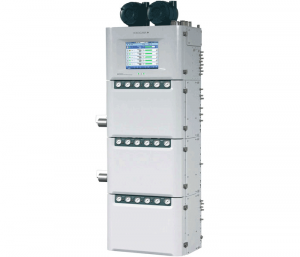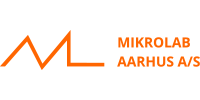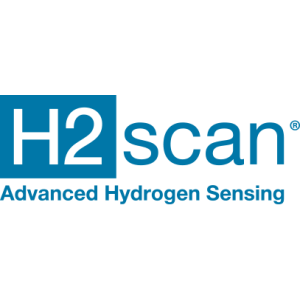Gaskromatografi
Gaskromatografi (GC) är en av de mest använda analysteknikerna för separation och identifiering av kemiska föreningar i komplexa gasblandningar. Tekniken möjliggör hög upplösning och noggrann analys av organiska och flyktiga ämnen, vilket gör den oumbärlig inom industri och forskning.
Vi erbjuder gaskromatografer som används inom en rad applikationer, inklusive kvalitetskontroll, processoptimering och emissionsövervakning.
Mer information
Grundprincip för gaskromatografi
-
Bärgas
I gaskromatografi används en inert bärgas (oftast helium, ibland kväve eller väte) för att transportera provets beståndsdelar genom systemet. -
Injektion av prov
Provblandningen (ofta i flytande eller gasform) injiceras i instrumentet. I de flesta GC-system sker injektionen genom en uppvärmd injektionsport. Där omvandlas prover i vätskeform till gasfas (om de inte redan är gasformiga) innan de följer med bärgasen in i kolonnen. -
Kolonn
Huvudkomponenten i en gaskromatograf är kolonnen. Den är vanligtvis ett långt och tunt rör (kapillärkolonn) belagt med en stillastående fas på insidan:-
Stationär fas: Ett tunt skikt av en vätska (eller ibland en polymer) som sitter fast på kolonnens innervägg.
-
Rörligt fas: Bärgasen som kontinuerligt flödar genom kolonnen.
-
-
Separation
När provets flyktiga komponenter färdas genom kolonnen interagerar de olika mycket med den stationära fasen. De ämnen som har större affinitet för den stationära fasen ”bromsas upp” och kommer ut senare, medan ämnen med lägre affinitet rör sig snabbare och elueras tidigare. På så sätt separeras ämnena i tiden. -
Detektion
Vid kolonnens utlopp finns en detektor. Några vanliga detektortyper är:-
FID (Flame Ionization Detector), som mäter jonström när organiska föreningar förbränns i en liten låga.
-
TCD (Thermal Conductivity Detector), som mäter förändringar i värmeledningsförmåga när olika ämnen passerar.
-
ECD (Electron Capture Detector), känslig för halogenerade och andra elektronegativa föreningar.
-
MS (Masspektrometer), ger mer detaljerad identifiering av föreningarna genom masspektra.
Signalen från detektorn registreras i ett kromatogram där varje topp motsvarar ett ämne, och toppens höjd eller area är ett mått på hur mycket av ämnet som finns i provet.
-
-
Utvärdering
Från kromatogrammet kan man:-
Identifiera ämnen genom retentionstiden (den tid ämnet tar att passera genom kolonnen) och, om kopplat till en masspektrometer, dess masspektrum.
-
Kvantifiera halter genom att jämföra toppareor eller topphöjder mot en känd standard.
-
Sammanfattning av arbetssteg
-
Provet injiceras och förgasas.
-
Bärgasen för provet genom en kolonn där separationen sker via interaktion mellan ämnena och stationära fasen.
-
Komponenterna eluerar i tur och ordning och detekteras.
-
Ett kromatogram registreras och utvärderas för kvalitativ och/eller kvantitativ analys.
























